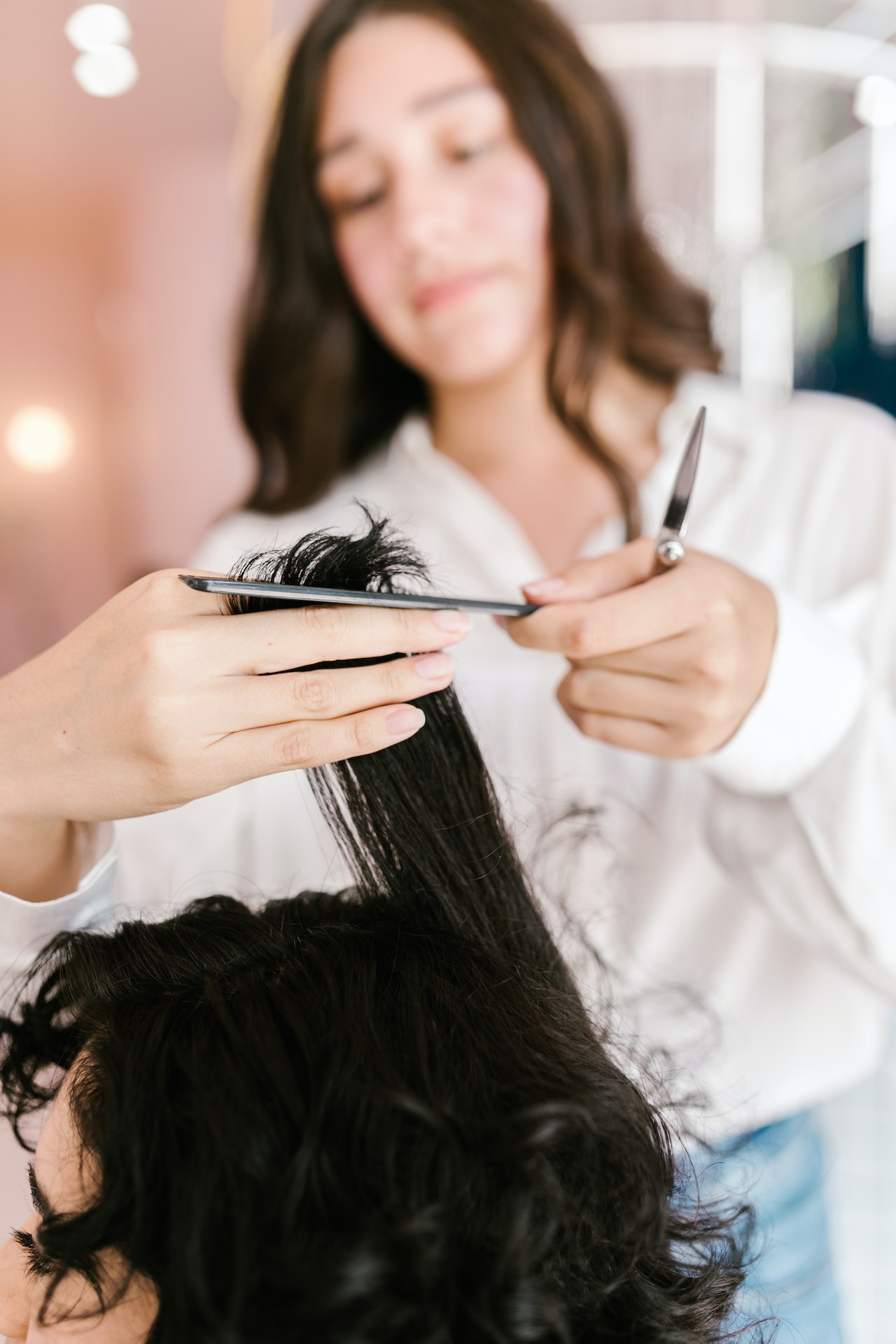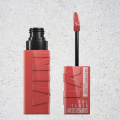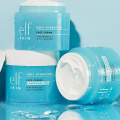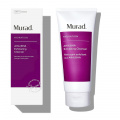Trim Haircut: A Fresh and Polished Look for Your Hair
Discover the transformative power of a trim haircut. Get insights on how a simple trim can enhance your hair's health, style, and overall appearance.

Love to give your hair a fresh look? A trim haircut might be just what you need. While it may not involve a dramatic change in length, a trim cut can work wonders in revitalizing your hair's appearance. A hair trim involves the removal of split ends, and damaged strands, resulting in a more polished and neat look.
Beyond aesthetics, regular trims also play a crucial role in promoting hair health. By removing split ends, you prevent them from traveling up the hair shaft and causing further damage. This helps to prevent breakage, frizz, and overall hair dullness. In this article, we'll explore the benefits of a trim haircut in more detail. From its impact on hair health to the way it enhances your overall style, you'll discover why a regular trim should be an essential part of hair maintenance. So, let's dive in and learn how a trim can give your hair a new life.
What Is a Trim Haircut?

The primary purpose of a hair trim is to maintain the current hairstyle and keep the ends of your hair looking healthy and neat. Unlike a major haircut or restyle, a trim cut aims to preserve the shape and style you already have while getting rid of any damaged or split ends. During a trim, a hair stylist carefully evaluates the condition of your hair and determines where and how much hair needs to be removed. They use professional tools to precisely cut the targeted areas, ensuring a clean and even result.
It's important to note that a trim cut can vary in terms of length and specific techniques used depending on your hair's needs and the desired outcome. Communication with your stylist is key to achieving the desired results. Overall, a trim is a maintenance haircut that helps keep your hair looking fresh, promotes healthier hair growth, and prevents split ends from traveling further up the hair shaft. It's a vital part of regular hair care to maintain your hairstyle and overall hair health.
Trim vs. Haircut: What's the Difference?

When it comes to hair maintenance, understanding the differences between a trim haircut and a haircut is essential. Here's a breakdown of the key differences:
1. Length
A trim cut typically involves the removal of a small amount of hair length, usually around 1/4 inch to 1 inch. It aims to maintain the current length and shape of your hairstyle. In contrast, a haircut involves a more significant change in length, whether it's a few inches or a complete restyle.
2. Style Alteration
A hair trim focuses on maintaining the existing style and shape of your hair. It primarily targets split ends, damaged strands, and any excess weight, ensuring that your hairstyle looks neat and healthy. On the other hand, a haircut involves altering the style, whether it's a new haircut, layered cut, or different hair shape.
3. Frequency
Trims are often recommended every 6 to 8 weeks as part of regular hair maintenance. They help prevent split ends from traveling up the hair shaft and maintain the overall health of your hair. Haircuts, on the other hand, are less frequent and typically occur when you desire a significant change in length or style.
4. Hair Health
Trims play a crucial role in promoting hair health by removing damaged ends and preventing further breakage. Regular trims help maintain the shine of your hair and keep it looking vibrant. Haircuts can also contribute to hair health by removing damaged or unhealthy hair, however, they are more focused on style transformation.
In summary, a trim is a routine maintenance haircut that maintains the current style and eliminates split ends, while a haircut involves a more significant change in length and style. Both serve different purposes and are necessary for different hair care needs. Consulting with a professional hairstylist can help determine whether you need a trim or a haircut based on your specific goals and hair condition.
Trim vs. Haircut: Which Is More Cost-Effective?

Generally, a hair trim is less expensive than a full haircut. Since a trim involves removing a small amount of hair length and focuses on maintaining the existing style, it requires less time and effort from the hairstylist. Therefore, the cost of a trim haircut is typically lower compared to a more extensive haircut or restyling. The exact price difference between a trim and a haircut can vary depending on various factors such as the location, salon or barbershop pricing policies, and the expertise of the stylist.
It's best to check with your preferred salon or stylist to get specific pricing information for trims and haircuts. It's worth noting that the cost of a trim or haircut can also vary based on additional services such as shampooing, styling, or treatments. Be sure to communicate your expectations and desired services with your stylist or barber to get a clear understanding of the pricing involved.
Top 6 Signs You Need a Trim Haircut
Knowing when it's time for a trim cut can help you maintain healthy and well-groomed hair. Here are some signs that indicate you may need a trim:
1. Split Ends

Split ends are a common sign that your hair needs a trim. If you notice frayed or split strands, it's an indication that the ends of your hair have become damaged and need to be snipped off.
2. Tangled Hair
When your hair tangles easily or gets caught in combs or brushes, it may be a sign that the ends are rough or damaged. Trimming the ends can help reduce tangling and make detangling easier.
3. Lack of Manageability
If your hair has become difficult to style, lacks shine, or feels unmanageable, it could be a sign that the ends are damaged. Trimming can improve the overall texture and appearance of your hair, making it more manageable.
4. Thinning Hair
Over time, hair can become thinner at the ends due to breakage and damage. Regular trims help remove weak and thinning ends, promoting healthier hair growth. Adding to this, our contributor Eliza Pineda, In-House hair expert at Mayraki Professional, says, “Ends become easily dried out of all the parts of your hair. They get the most damaged so cutting them off helps prevent split ends and thinning.”
5. Uneven Length
If your hair has uneven lengths or looks unevenly shaped, a trim can help create a more balanced and polished look.
6. Stalled Hair Growth
If you've noticed that your hair growth has plateaued or slowed down, removing split ends through regular trims can support healthier growth and prevent breakage.
Remember, these signs may vary depending on your hair type, length, and overall hair health. Consulting with a hair stylist or barber is recommended to assess your specific needs and determine when a trim haircut is necessary.
5 Signs You Need A Haircut

While a hair trim is often sufficient for maintaining hair health, there are instances when you may require more than just a trim. Here are some signs that indicate you may need additional hair care:
1. Significant Hair Damage
If your hair is extensively damaged, a trim alone may not be enough. In such cases, it's advisable to consult a professional hairstylist who can recommend appropriate treatments or suggest a more substantial haircut to remove the damaged portions.
2. Drastic Style Change
If you're looking for a significant change in your hairstyle, such as transitioning from long to short hair or trying a completely new haircut, a trim won't achieve the desired transformation. A new haircut that aligns with your style goals would be more appropriate.
3. Uneven Or Overgrown Hair
If your hair has uneven lengths or has grown too long and lost its shape, a simple trim might not suffice. A hairstylist can help reshape and balance your hair by incorporating more substantial cutting techniques or layering.
4. Restoring Hair Health
If your hair is in a compromised state due to excessive heat styling, chemical treatments, or environmental factors, you may require more than a trim to restore its health. Deep conditioning treatments, hair masks, and targeted hair care routines may be necessary to improve its condition.
5. Hair Loss Or Thinning
If you're experiencing significant hair loss or thinning, a hair trim won't address the underlying issue. It's important to consult a healthcare professional or a trichologist who can determine the cause of the hair loss and recommend appropriate treatments or lifestyle changes.
How Often Should You Get a Trim Haircut
The frequency of trimming your hair can vary depending on individual factors such as hair type, length, and overall hair health. However, as a general guideline, most hair stylists recommend getting a trim every 6 to 8 weeks. Regular trims help maintain the shape and integrity of your hairstyle while keeping split ends in check.
By removing the damaged ends, trims promote healthier hair growth and prevent split ends from traveling further up the hair shaft, which can lead to more significant hair damage. On the other hand, those with longer hair may get a trim every 10 to 12 weeks. Ultimately, it's important to consider the specific needs of your hair and consult with a hairstylist. They can assess your hair's condition, take into account your styling routine, and provide personalized recommendations on the ideal frequency of trims to maintain your hair's health and desired style. Sharing a tip for maintaining hair health, our contributor Eliza Pineda says, “To take care of your hair post-trimming, oil up the ends, wash hair, and then apply a hair mask with protein.”
Top 5 Amazing Benefits of Getting a Trim

Getting regular trims offers several benefits for your hair's health and appearance. Here are some key advantages of getting a hair trim:
1. It Helps Prevent Split Ends
Trimming your hair regularly helps prevent the formation and progression of split ends. Split ends occur when the hair cuticle becomes damaged, causing the hair strand to split into two or more fragments. By removing split ends through trims, you can prevent them from spreading up the hair shaft and causing further damage.
2. It Boosts Hair Growth
Regular trims contribute to overall hair health and speed up hair growth. By removing split ends and damaged hair, you reduce the risk of breakage, which can impede hair growth. Trims also help maintain a consistent hair length, preventing uneven growth and promoting a more uniform appearance.
3. It Improves Hair Texture
Trimming can help improve the texture and feel of your hair. By removing damaged or frayed ends, your hair will appear smoother, softer, and more manageable. It can reduce tangling and make styling easier.
4. It Helps Maintain the Style of Your Hair
Trims are crucial for maintaining the shape and structure of your hairstyle. Regularly trimming your hair helps preserve the intended style and prevents it from becoming unruly or losing its shape over time. This is particularly important for layered haircuts or hairstyles with distinct lengths.
5. It Enhances the Visual Appeal of Your Tresses
A trim can enhance the overall appearance of your hair. By removing split ends and refreshing the ends of your hair, it looks neater and healthier. Trim haircuts can add volume and bounce to your hair, making it appear more vibrant and lively.
Conclusion
In conclusion, getting regular hair trims is essential for maintaining healthy and beautiful hair. Trims help prevent split ends, promote hair health and growth, improve texture, maintain the style, and enhance the overall appearance of your hair. By removing damaged ends and keeping your hair in good condition, you'll enjoy a vibrant and manageable mane. Remember, finding the right frequency for trims depends on factors such as your hair type, length, and overall hair health. Consulting with a hairstylist will ensure personalized recommendations tailored to your specific needs. Embrace the benefits of regular trims and make them a part of your hair care routine.
Contributor: Eliza Pineda, In-House Hair Expert at Mayraki Professional
ALSO READ: 52 Gorgeous Medium-Length Haircuts for a Fabulous Look
21 Must-try Haircuts for Straight Hair That Will Leave You in Awe
100 trending short hairstyles for women: The best compilation





 JOIN OUR WHATSAPP CHANNEL
JOIN OUR WHATSAPP CHANNEL






































































































